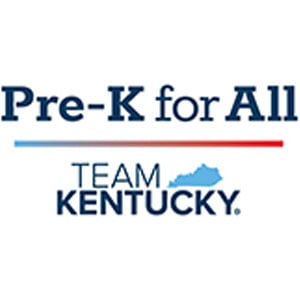By Dr. Raymond Hebert
Thomas More University
Part 8 of our series: “Retrospect and Vista II: Thomas More College/University, 1971-2021”
In the 1970s, Thomas More College joined the bandwagon of colleges and universities that, guided by their accreditation bodies, developed long-range plans. Reaccreditation is a process that higher educational institutions undergo in a cycle of ten years. It is expected that the accrediting body — in Thomas More’s case the Southern Association of Colleges and Schools (SACS)—provide their member institutions with helpful suggestions to address possible weaknesses or opportunities for growth. The 1969 SACS Reaffirmation Committee Visitation to Thomas More recommended the inclusion of long-range planning as a top priority.
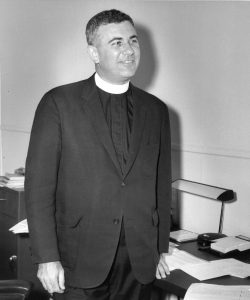
Committee One was the first long-range planning committee in the history of Villa Madonna/Thomas More College. The most important component of this effort was the creation of an Education Policies Task Force (EPTF). This task force worked within the Committee One structure to create what would become the short-lived Venture Program beginning in 1972-1973.
The Venture Program emerged from a 1971 recommendation of the EPTF. It was designed “for traditional students to attain a Bachelor’s or an Associate’s Degree in Integrative Studies” (Thomas More University Archives, File 06.01, Venture Program). The Day Division was renamed the Division of Integrative Studies in 1973 for students in the Venture Program, while the evening and Saturday division was changed to the Division of Continuing Education.
The Venture Program concept was, above all else, designed to allow students the unique opportunity to determine their own educational needs and goals within a “cluster” of courses chosen by students in consultation with faculty advisers. There were creative components for the Freshman Studies Program in particular, called “Skills of Inquiry” and “Exploration of Thought.” Beyond that, a General Studies Board was created to help develop the broader-based curriculum and to approve what would become a wide range of student-initiated majors with the clusters of courses they would generate. Four Integrative Councils were also established concurrently for: Science; Humanities; Fine Arts; Social Sciences and the Professions. They were expected to help with the curriculum of each of their areas, as well as the distribution of funds that would be raised both internally and externally.
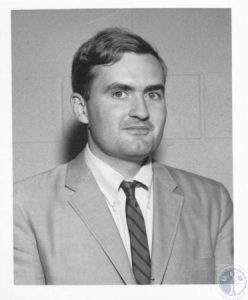
In looking back to the SACS recommendations for change in 1969, it is clear that the primary criticism was related to the college’s curriculum. In an April 1, 1970 Inter-Office Memorandum from President Murphy, he had reminded the College community that “it will be Committee One’s task [in creating a curriculum/program] to tell us what the alternative programs might be and what those programs might variously cost in dollars, personnel, morale, prestige, infamy or what have you” (TMU Archives, Rev. Murphy memo on April 1, 1970).
In a parallel document, the Academic Dean at the time, Fr. Charles Rooks, circulated his views about “Planning for the Future.” He reminded all on campus about the challenges/problems that private colleges would have in the future, first “with respect to financing,” and next as a Catholic college “in the midst of worldwide Church renewal set in motion by Vatican Council II.” He understood the need for all programs to improve, upgrade and adapt to carry out the college’s purpose. The result included the following features:
1. Skills of Inquiry – Freshman Year Seminar Part I,
2. Exploration of Thought – Freshman Year Multi-Disciplinary Math/Science Program Part II, and
3. The “Cluster” approach to Student-Initiated Majors.
Thomas H. Maher, Associate Academic Dean, authored the proposal for the Venture Program. When analyzing the archival material, what is clear is the administration’s interest in a revised set of education policies/curriculum to satisfy SACS, countered by significant opposition from many of the faculty (TMU Archives, File 06-01, Venture Program). The secret ballot tabulated by the Faculty Senate revealed a favorable vote of 46-32, though, as will be shown in the next article, the opposition was led by well-respected, senior faculty. After the program failed in only four years, my own subsequent conversations with a wide range of faculty could not generate more than one or two people willing to admit they had actually voted for it. That said, the Venture Program was approved during 1971 to take effect in 1972. It was to be carried out by the 14-member Educational Policies Task Force and the Thomas More College Administration (TMU Archives, EPTF Program Proposal).
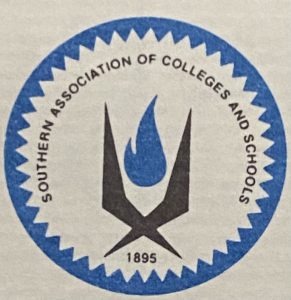
A November 12, 1971 press release from James Ott, Director of Public Relations, stated that “the new academic program … would have two effects”:
1. To provide a new approach to the freshman year, consisting of two primary categories called “Skills of Inquiry” and “Exploration of Thought.”
2. To establish a “cluster” system approach to education whereby students could elect to take courses of their own choosing centered on a theme.
The “Inquiry” course allowed students the opportunity to participate in the research activities of a faculty member. Each class would have a maximum of ten students per faculty member. The course was to be research-oriented and non-formally structured in a seminar format, with multiple written and oral reports expected. The progress in the course would be based on the student’s:
• Ability to develop a clear description of an inquiry problem;
• The ability to propose and defend an initial method for attacking the problem;
• The ability to follow through with and implement the proposed method of action;
• The ability to move the problem into a position open to multidisciplinary investigation;
• The ability to propose and defend some other related avenue of inquiry, also unexplored;
• And finally, the ability to report clearly and to communicate to others the results of their efforts.
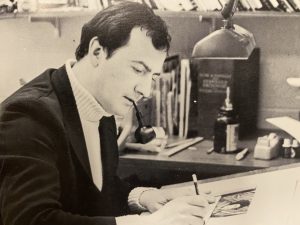
Sample titles for “Skills of Inquiry” seminars included: “Science and Survival” (Physics), “Beyond Man” (Theology), “Social and Cultural Change” (Sociology), “Sports and Games” (History), and “Folklore Language and Mythology” (English) (TMU Archives, “A Guide to Venture Prepared Especially for Students,” p. 4).
The “Exploration of Thought” experience was described as a series of six mini courses which would deal with the ways in which we learn. The course provided students with examples demonstrating how different disciplines can look at the same problem.
The six modules taught by six separate faculty were:
1. Math and Logic
2. Scientific Method
3. General Systems Theory
4. The Computer as an aid to Thinking
5. Perception
6. Values and Value Systems
The Freshman Year Program also provided tools to help with these courses, such as Communication Skills Workshops and a Venture Advising Program whereby the Inquiry teachers also served as the advisors for their students (TMU Archives, “Faculty Guide to Venture”, pp. 5-6).
The “cluster” concept was a thematic approach to part of the general requirements after the freshman year. “The selected focus of the cluster” could “be an idea, an issue, a person, a culture, a technology, an institution, etc.” Once the theme was selected, the student collected a minimum of seven courses, or about 21 credit hours, including a final Integrative Inquiry Course in an independent study format. This integration of courses, as the Task Force perceived, was “the heart and soul of the College’s general requirements. The course clusters are guided by a single faculty member and must not just be an extension of the student’s major but also must represent three of the four academic divisions; Humanities; Fine Arts; Sciences; and Social Sciences and the Professions.” The final piece was to be the senior seminar, which would be a self-directed study with a “goal of providing an integration of the major and the cluster” (TMU Archives, “Faculty Guide to Venture”, p. 6). Sadly, the Venture Program’s future was to be brief. Our next article will discuss faculty critiques prior to the final approval of the Venture Program, as well as specific reasons for its failure.
Dr. Raymond G. Hebert is a Professor of History and Executive Director of the William T. Robinson III Institute for Religious Liberty at Thomas More University. He has just completed his 46th year at Thomas More and, with that background, will now serve as the General Editor of the official history of Thomas More College/University from 1971-2021. With a projected title of RETROSPECT AND VISTA II, it will serve as the sequel to Sr. Irmina Saelinger’s RETROSPECT AND VISTA, the history of the first 50 years of Thomas More College (formerly Villa Madonna College). He can be contacted at hebertr@thomasmore.edu.
We want to learn more about the history of your business, church, school, or organization in our region (Cincinnati, Northern Kentucky, and along the Ohio River). If you would like to share your rich history with others, please contact the editor of “Our Rich History,” Paul A. Tenkotte, at tenkottep@nku.edu. Paul A. Tenkotte, PhD is Professor of History at Northern Kentucky University (NKU) and the author of many books and articles.












